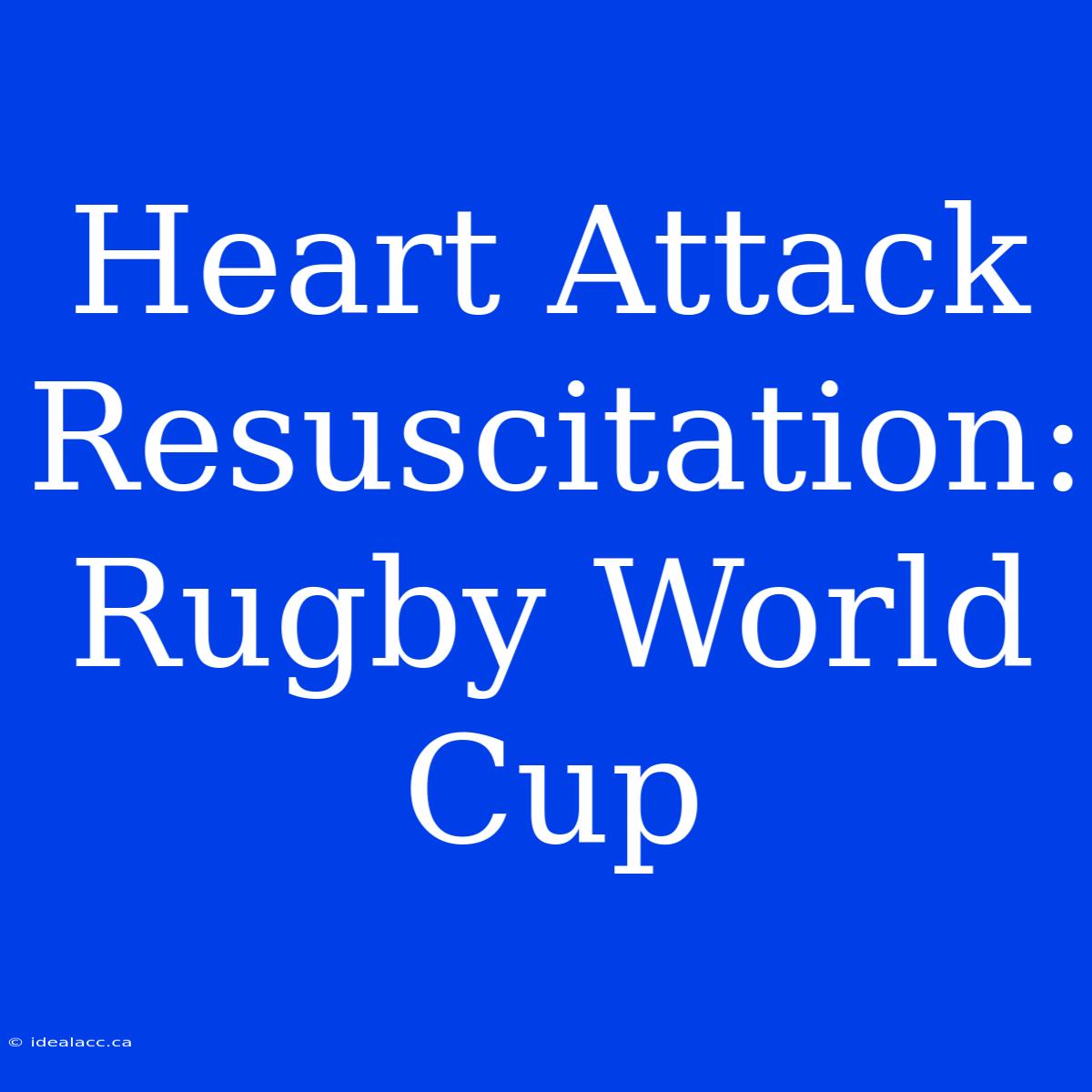Heart Attack Resuscitation: A Crucial Skill on the Rugby Pitch and Beyond
What if a heart attack struck during a Rugby World Cup match? Heart attack resuscitation is a life-saving skill that could be the difference between a tragedy and a triumphant recovery. Editor Note: Heart attack resuscitation is a vital topic to understand, especially in high-intensity sports like rugby.
This is a critical topic because heart attacks can happen anywhere, anytime, and even to seemingly healthy athletes. Rugby, with its physical demands and potential for collisions, presents a unique context where the ability to respond swiftly and effectively to a cardiac emergency is crucial. Understanding the principles and techniques of heart attack resuscitation can equip individuals on and off the pitch with the knowledge to potentially save a life.
Our research involved a thorough examination of medical guidelines, expert opinions, and case studies to provide a comprehensive guide on heart attack resuscitation. We've distilled this information into actionable steps and practical tips to enhance preparedness and confidence in handling such an emergency.
Key Takeaways of Heart Attack Resuscitation
| Key Takeaway | Description |
|---|---|
| Early Recognition | Identifying the signs and symptoms of a heart attack is vital for prompt action. |
| Immediate Response | Time is of the essence; initiating CPR and using an AED as quickly as possible is crucial. |
| Effective CPR | Correct technique is paramount to maximizing the chances of survival. |
| AED Availability | Access to a defibrillator can significantly increase survival rates. |
| Teamwork | Coordinated efforts between medical professionals, coaches, and bystanders are essential. |
Heart Attack Resuscitation: Understanding the Basics
Heart attack resuscitation involves a series of critical steps aimed at restoring normal heart function and blood flow. This process begins with early recognition of the symptoms and involves the following essential aspects:
1. Recognition: Identifying the Warning Signs
Recognizing the warning signs of a heart attack is the first step to saving a life. The most common symptoms include:
- Chest pain: A feeling of pressure, tightness, squeezing, or pain that might radiate to the arm, jaw, neck, or back.
- Shortness of breath: Difficulty breathing or a feeling of tightness in the chest.
- Nausea and vomiting: Feeling sick to your stomach.
- Sweating: Cold sweats or excessive perspiration.
- Lightheadedness or dizziness: Feeling faint or dizzy.
These symptoms can vary from person to person. Some individuals might experience only mild discomfort, while others may have severe pain. It is important to remember that any unusual or persistent chest discomfort or other symptoms suggestive of a heart attack should be taken seriously.
2. Response: Immediate Action
Once a heart attack is suspected, immediate action is crucial. The following steps should be taken:
- Call emergency services immediately: Contact your local emergency number (e.g., 911 or 112).
- Start CPR: If the person is unresponsive and not breathing, begin cardiopulmonary resuscitation (CPR) to keep blood flowing to the brain and heart.
- Use an AED: If an automated external defibrillator (AED) is available, use it as instructed. An AED can deliver an electric shock to help restore normal heart rhythm.
3. CPR: The Vital Link
CPR is a life-saving technique that combines chest compressions and rescue breaths to circulate blood and oxygen throughout the body. CPR can significantly increase the chances of survival during a heart attack, particularly when performed early and effectively.
4. AED: A Powerful Tool
An AED is a portable device that can analyze heart rhythm and deliver an electric shock (defibrillation) if necessary to restore a normal heartbeat. AEDs are designed for use by anyone, even with minimal training.
5. Teamwork: A Unified Effort
A coordinated response involving medical professionals, coaches, and bystanders is critical for a successful resuscitation effort. Communication, clear roles, and prompt action are paramount in maximizing the chances of survival.
Heart Attack Resuscitation on the Rugby Pitch
Rugby, with its high-intensity nature, can be a demanding sport on the cardiovascular system. It is essential for teams to have a comprehensive plan in place to address potential cardiac emergencies, including:
- Trained medical personnel: Having certified medical professionals on the sidelines is crucial for prompt assessment and treatment.
- AED availability: Ensure that AEDs are readily accessible at all times.
- Team awareness: Coaches and players should be trained in recognizing the signs of a heart attack and performing CPR.
- Emergency procedures: A clear and practiced emergency plan should be in place for situations where a heart attack occurs during a match.
Heart attack resuscitation is not just about saving lives on the rugby pitch; it's a skill that can be applied in any situation where someone experiences a cardiac emergency. By understanding the principles and techniques, we empower ourselves to act decisively and potentially make a life-saving difference.

